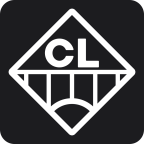Laser cutting of thick steel plates has become a part of daily manufacturing, but laser cutting of thick plates still faces some challenges: energy must penetrate deeply, molten material must be cleanly discharged, and the cutting edge must remain stable over long distances. The following are the main challenges faced by the workshop and mature solutions.
Why thick plates are tricky
As thickness increases, three physical effects dominate: the cut front becomes long and steep, making melt removal difficult; assist-gas flow develops shock cells that deflect molten material; and heat buildup widens the kerf and roughens edges. Without precise control, these factors result in dross, taper, or even incomplete cuts.
Power and beam quality
High-brightness fiber and disk lasers in the 10–24 kW class enable real thick-section cutting when paired with the right head and parameters. For example, modern industrial systems can process up to 40–50 mm stainless steel and 60 mm mild steel with thick-sheet cutting packages.
Beam shaping has become an important lever. Dynamic beam shaping or “wobble cutting” redistributes energy along the cut front, improving quality and speed in 15 mm and thicker stainless steel. The approach broadens the process window and reduces interruptions.
Assist gas: oxygen vs nitrogen
Mild steel (oxygen cutting): Oxygen reacts with the material, generating additional heat and aiding penetration. This allows lower laser power for thick cuts but produces an oxidized, dark edge that may require post-cleaning.
Stainless steel (nitrogen cutting): Nitrogen prevents oxidation and produces a bright, clean edge, but requires very high pressure (12–30 bar) and flow to physically blow molten material from the kerf. Nozzle design and gas line sizing become critical to avoid pressure drops and unstable cuts.
Understanding where your infrastructure limits lie is essential; oversupplying pressure won’t help if the gas jet is already choked.
Piercing: the hidden time sink
On thick plates, piercing often consumes more cycle time than cutting. Traditional stationary piercing can cause long delays and spatter defects. Advanced strategies, such as circular (trepanning) piercing or power-modulated piercing, can cut pierce times by nearly half while producing cleaner holes. Optimizing pulse frequency ensures molten material clears properly, avoiding re-solidification.
Practical parameter guidelines
Focus position: Slightly below the surface for oxygen cutting; deeper for nitrogen to sustain energy at the cut front.
Nozzle and standoff: Larger or optimized nozzles with ~1 mm standoff maintain gas coherence through the kerf.
Active cooling: Localized cooling stabilizes the melt pool in thick mild steel and allows tighter nesting.
Beam modulation: High-frequency beam oscillation widens the process window and improves stainless edge smoothness.
Common issues and solutions

Indicative capability guide

These values are based on leading OEM specifications and should be validated in practice with sample coupons.
Procurement checklist
When evaluating systems for Laser Cutting Thick Plates, ask vendors:
Can your gas infrastructure deliver 20–30 bar nitrogen at full flow without pressure sag?
Does the CNC support circular and power-modulated piercing routines?
Is dynamic beam shaping or wobble mode available for thick stainless?
Are cooling features offered for thick mild steel cutting stability?









